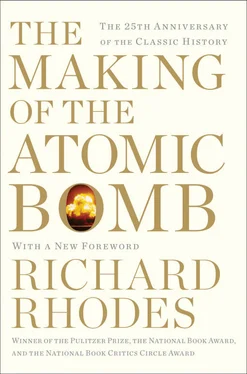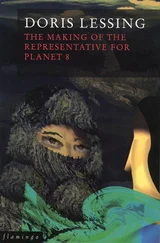Caltech also courted Einstein. So did Oxford and Columbia, but he was attracted to the cosmological work of the dean of Caltech graduate studies, a Massachusetts-born physicist of Quaker background named Richard Chace Tolman. Ongoing observations at Mount Wilson Observatory, above Pasadena, might confirm the last of the three original predictions of the general theory of relativity, the gravitational red-shifting of the light of high-density stars. Tolman sent a delegation to Berlin; Einstein agreed to visit Pasadena in 1931 as a research associate.
He did, twice, returning to Berlin between, dining in Southern California with Charlie Chaplin, viewing a rough cut of Sergei Eisenstein’s death-obsessed film Que Viva Mexico! with its sponsor Upton Sinclair. As his second visit approached, in December, Einstein was ready to reassess his future: “I decided today,” he wrote in his diary, “that I shall essentially give up my Berlin position and shall be a bird of passage for the rest of my life.” 678
The bird of passage was not to nest in Pasadena. Abraham Flexner, the American educator, sought out Einstein at Caltech. Flexner was in the process of founding a new institution, not yet located or named, chartered in 1930 with a $5 million endowment. The two men strolled for most of an hour up and down the halls of the club where Einstein was staying. They met again at Oxford in May and once more at the Einsteins’ summer house at Caputh, outside Berlin, in June. “We sat then on the veranda and talked until evening,” Flexner recalled, “when Einstein invited me to stay to supper. After supper we talked until almost eleven. By that time it was perfectly clear that Einstein and his wife were prepared to come to America.” 679They walked together to the bus stop. “Ich bin Feuer und Flamme dafür” Einstein told his guest as he put him on the bus: “I am fire and flame for it.” 680, 681The Institute for Advanced Study would be established in Princeton, New Jersey. Einstein was its first great acquisition. He had suggested a salary of $3,000 a year. His wife and Flexner negotiated a more respectable $15,000. It was what Caltech had been prepared to pay. But at Caltech, as in Zurich before, Einstein would have been expected to teach. At the Institute for Advanced Study his only responsibility was thought.
The Einsteins left Caputh in December 1932, scheduled to divide the coming year between Princeton and Berlin. Einstein knew better. “Turn around,” he told his wife as they stepped off the porch of their house. “You will never see it again.” 682She thought his pessimism foolish.
In mid-March the Nazi SA searched the empty house for hidden weapons. By then Einstein had spoken out publicly against Hitler and was returning to Europe to prepare to move. He settled temporarily at a resort town on the Belgian coast, Le Coq sur Mer, with his wife, his two stepdaughters, his secretary, his assistant and two Belgian guards: assassination threatened again. In Berlin his son-in-law arranged to have his furniture packed. The French obligingly transported his personal papers to Paris by diplomatic pouch. At the end of March 1933 the most original physicist of the twentieth century once again renounced his German citizenship.
Princeton University acquired John von Neumann and Eugene Wigner in 1930, in Wigner’s puckish recollection, as a package deal. The university sought advice on improving its science from Paul Ehrenfest, who “recommended to them not to invite a single person but at least two… who already knew each other, who wouldn’t feel suddenly put on an island where they have no intimate contact with anybody. Johnny’s name was of course well known by that time the world over, so they decided to invite Johnny von Neumann. They looked: who wrote articles with John von Neumann? They found: Mr. Wigner. So they sent a telegram to me also.” 683In fact, Wigner had already earned a high reputation in a recondite area of physics known as group theory, about which he published a book in 1931. He accepted the invitation to Princeton to look it over and perhaps to look America over as well. “There was no question in the mind of any person that the days of foreigners [in Germany], particularly with Jewish ancestry, were numbered…. It was so obvious that you didn’t have to be perceptive…. It was like, ‘Well, it will be colder in December.’ Yes, it will be. We know it well.” 684
Leo Szilard in Berlin debated his future in a musing letter to Eugene Wigner written on October 8, 1932. 685He was apparently still trying to organize his Bund: the knowledge had got into his blood that he had work to accomplish at the moment more noble than science, he wrote—bad luck, it couldn’t be distilled out again. He understood he wasn’t allowed to complain if such work commanded no office space in the world. He was considering a professorship in experimental physics in India since it would be essentially only a teaching post and he could therefore turn his creative energies elsewhere. Only the gods knew what might be available in Europe or on the American coast between Washington and Boston, places he might prefer, so he perforce might go to India. In any case, until he found a position he would at least be free to do science without feeling guilty.
Szilard promised to write Wigner again when he had an “actual program.” He did not yet know that his actual program would be organizing the desperate rescue. He parked his bags at the Harnack House in Dahlem and sat down with Lise Meitner to talk about doing nuclear physics at the Kaiser Wilhelm Institute. She had Hahn, and Hahn was superb, but he was a chemist. She could use a jack-of-all-trades like Szilard. But the collaboration was not to be. Events moved too quickly. Szilard took his train from Berlin, the train that proved him, if not more clever than most people, at least a day earlier. That was “close to the first of April, 1933.” 686
If Pauli, safe behind the lines in Zurich, had misread events before, he was clear enough once the new law was announced. Walter Elsasser, among the first to leave, chose neutral Switzerland, entrained for Zurich and homed on the physics building at the Polytechnic. “On entering the main door of this building one faces a broad and straight staircase leading directly to the second floor. Before I could take my first step on it, there appeared at the top of the stairs the moon-face of Wolfgang Pauli, who shouted down: ‘Elsasser,’ he said, ‘you are the first to come up these stairs; I can see how in the months to come there will be many, many more to climb up here.’” 687The idea of a German dictatorship was no longer Quatsch.
Longstanding anti-Semitic discrimination in academic appointments weighted the civil service law dismissals in favor of the natural sciences, fields of study that had evolved more recently than the older disciplines of the liberal arts, that German scholarship had looked down upon as “materialistic” and that had therefore proved less impenetrable to Jews. 688Medicine incurred 423 dismissals, physics 106, mathematics 60—in the physical and biological sciences other than medicine, an immediate total of 406 scientists. The University of Berlin and the University of Frankfurt each lost a third of its faculty.
The promising young theoretical physicist Hans Bethe, then at Tübingen, first heard of his dismissal from one of his students, who wrote him to say he read of it in the papers and wondered what he should do. Bethe thought the question impertinent—it was he who had been dismissed, not the student—and asked for a copy of the news story. Hans Geiger was professor of experimental physics at Tübingen at the time, having moved there from Berlin. When Bethe joined the faculty as a theoretician in November 1932, “Geiger explained his experiments to me, and in other ways made a lot of me, so all seemed to be well on the personal level.” Sensibly, then, Bethe wrote the vacationing Geiger for advice. 689, 690“He wrote back a completely cold letter saying that with the changed situation it would be necessary to dispense with my further services—period. There was no kind word, no regret—nothing.” 691A few days later the official notice arrived.
Читать дальше












